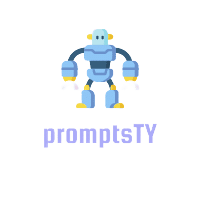Are you feeling overwhelmed by the idea of customer segmentation? You’re not alone! Many businesses struggle to understand their audience, which can lead to missed opportunities and ineffective marketing strategies. It can be frustrating to figure out how to divide your customer base in a way that makes sense and drives results.
But don’t worry! If you stick around, you’ll discover some effective ChatGPT prompts that can simplify the customer segmentation process. With the right prompts, you’ll not only identify different customer groups but also tailor your approach for each segment.
From practical examples to handy tips, you’ll get a roadmap to navigate this complex topic effortlessly. Let’s dive into the world of customer segmentation prompts, shall we?
Key Takeaways
Key Takeaways
- Customer segmentation helps tailor marketing strategies to different audiences.
- Utilize specific ChatGPT prompts to identify customer segments based on their behavior and preferences.
- Create clear, specific prompts focused on your segmentation goals for better results.
- Test and refine prompts based on the responses you receive to improve engagement.
- Avoid broad or vague questions to ensure more accurate insights from your queries.
- Analyze responses by categorizing insights and focusing on key metrics to guide your marketing efforts.

Effective ChatGPT Prompts for Customer Segmentation
Customer segmentation is essential for tailoring marketing strategies to diverse audience needs, and ChatGPT can help streamline this process.
Utilizing effective prompts allows marketers to harness customer data and generate actionable insights that drive personalized marketing efforts.
Here are some effective prompts you can use:
- “Identify customer segments based on purchasing behavior in the last year.”
- “Generate a list of potential target audiences for a new fitness app, considering demographics and psychographics.”
- “Provide insights into behavioral segmentation strategies that could improve email marketing campaigns.”
- “Analyze customer data to determine the most profitable demographic segment for our luxury skincare line.”
Using these prompts effectively can enhance data-driven customer insights, allowing for targeted communication and marketing strategies.
How to Create Customer Segmentation Prompts
Creating effective customer segmentation prompts is all about clarity and direction.
Start with defining the specific information you want to extract from ChatGPT.
Consider these actionable steps:
- Identify the goal of the segmentation, such as improving product recommendations or enhancing personalized marketing.
- Formulate questions that are clear and specific. For example, “What are the common characteristics of high-value customers?”
- Ensure your language is simple and direct to avoid any misinterpretation.
- Iterate on your prompts after testing their effectiveness. Review the responses and refine the questions based on the insights received.
Crafting prompts that evoke detailed responses takes practice, but it can significantly boost engagement and insight generation.
Top Use Cases for Customer Segmentation with ChatGPT
ChatGPT can be leveraged in various ways for customer segmentation, providing invaluable support across multiple business functions.
Here are some top use cases that showcase its versatility:
- “Help me create customer profiles based on recent purchase data.”
- “Suggest tailored communication strategies for millennials interested in skincare.”
- “Generate product recommendations for a segmented email list focused on eco-friendly products.”
- “Analyze data to identify trends and predict behavioral shifts in our customers over the next quarter.”
Using ChatGPT for such tasks can lead to improved customer retention and the creation of more targeted advertising campaigns.
Examples of Customer Segmentation Prompts for Different Industries
Different industries require unique approaches to customer segmentation, and ChatGPT can assist in tailoring these specifics.
For example:
- For retail: “List customer segments based on shopping frequency and average transaction value.”
- For healthcare: “Identify patient demographics that respond best to telehealth services.”
- For e-commerce: “Analyze the purchase patterns of customers who frequently buy athletic gear.”
- For technology: “Generate insights on customer segments that are early adopters of new tech products.”
These targeted prompts will help businesses not only understand their customer base but also tailor offerings and communications effectively.

Tips for Refining Your Customer Segmentation Prompts
Refining your customer segmentation prompts is crucial for obtaining accurate and actionable results from ChatGPT.
Here are some practical tips to help you enhance your prompts:
- Review past responses to determine what worked and what didn’t.
- Ask for specificity in responses. For instance, “Define five key demographics within our customer base.”
- Test variations of the same prompt. Experiment with wording like “What are the buying habits of millennials compared to Gen Z?”
- Solicit feedback from colleagues or team members to identify areas for improvement.
- Stay updated on market trends and demographics to inform your prompt adjustments.
Iterating on feedback will guide you to create more insightful prompts over time.
Common Mistakes to Avoid with Customer Segmentation Prompts
When crafting customer segmentation prompts, avoiding common pitfalls can enhance the effectiveness of your queries.
Be wary of these common mistakes:
- Avoid overly broad questions like “Tell me about our customers.” Instead, specify: “Identify top purchase motivations for our 25-34-year-old customers.”
- Neglecting to provide context can lead to irrelevant answers. Always explain what you want to achieve.
- Don’t ignore key customer traits such as geographic location, shopping habits, or preferences.
- Vague phrasing can confuse the model; be clear on what information you seek.
- Failing to validate your prompts with real data can lead to inaccuracies.
- Don’t underestimate the diversity within your customer base; ensure prompts reflect that diversity.
Awareness of these mistakes will enhance the clarity and precision of your prompts, leading to better responses.
How to Analyze Responses from Your Customer Segmentation Prompts
Analyzing the responses from your customer segmentation prompts effectively can transform insights into actionable strategies.
Here’s how to navigate this process:
- Start by categorizing responses. For example, group insights by demographic or behavioral traits.
- Use analytical tools to quantify data, such as calculating average purchase values among segments.
- Differentiate between qualitative and quantitative analyses. Qualitative insights can reveal motivations, while quantitative can show trends.
- Focus on key metrics like customer lifetime value and retention rates when assessing response quality.
- Look for patterns and trends, such as seasonal buying behaviors or response to specific campaigns.
- Visualize the data using charts or graphs to identify relationships and aid in understanding.
- Finally, adjust your segmentation based on these insights to improve future marketing strategies.
Effective analysis allows for swift adaptation to customer needs and market dynamics.
Frequently Asked Questions about Customer Segmentation Prompts
Understanding customer segmentation prompts can enhance your marketing efforts. Here are some common questions:
- What is customer segmentation? It involves dividing a customer base into distinct groups based on shared characteristics.
- How can I use ChatGPT for segmentation? By inputting targeted prompts related to specific demographic or behavioral traits you want to analyze.
- What are the best practices for crafting prompts? Be specific, provide context, and seek feedback to refine your prompts continually.
- How do I interpret segmentation results? Identify key differences in behavior, preferences, and trends among segments and use these insights for strategy development.
- What tools can complement ChatGPT for segmentation? Consider using CRM systems, analytics platforms, or survey tools to gather data effectively.
- What are typical challenges in customer segmentation? Common issues include data inaccuracy, over-generalization, and lack of precise market understanding.
- How does segmentation impact marketing strategy? It allows for more personalized marketing efforts, ultimately leading to higher engagement and conversion rates.
Finding the right answers can significantly enhance how you approach customer segmentation in your marketing strategies.

How to Analyze Responses from Your Customer Segmentation Prompts
Analyzing responses from your customer segmentation prompts is crucial for deriving actionable insights.
Start by categorizing the responses based on common themes or demographic characteristics.
For example, group answers into segments like age, income level, and purchasing behavior.
Use analytical tools to quantify the insights, like calculating the average purchase frequency for each segment.
Differentiate between qualitative and quantitative analyses; qualitative insights can provide deeper understanding while quantitative data can highlight trends.
Keep an eye on important metrics such as customer lifetime value and churn rates to determine segment effectiveness.
Look for noticeable patterns, such as seasonal buying tendencies or responses to particular marketing campaigns.
Visualize your data in charts or graphs to clarify relationships among different segments.
Use the insights gained to refine your customer segmentation strategies and better meet market demands.
Incorporate insights into your marketing strategies to optimize engagement and conversion rates.
Frequently Asked Questions about Customer Segmentation Prompts
Customer segmentation can be confusing, but these FAQs can help clarify your understanding.
What is customer segmentation? It’s a marketing strategy that involves dividing a customer base into distinct groups based on similar characteristics, behaviors, or needs.
How can I use ChatGPT for segmentation? You can input specific prompts directed at analyzing and categorizing your customer data effectively.
For instance, you can say: “Segment my customers based on average transaction amounts and product preferences.”
What are the best practices for crafting prompts? Always be specific, clearly provide context, and test different phrasings to see what yields the best results.
How do I interpret segmentation results? Identify key trends and behaviors within each segment to tailor your marketing efforts and product offerings.
What tools can complement ChatGPT for segmentation? Tools like CRM systems, analytics dashboards, and customer surveys can provide the foundational data you need to segment effectively.
What are typical challenges in customer segmentation? Issues like data accuracy, overgeneralization, and lack of clarity can hinder effective segmentation.
How does segmentation impact marketing strategy? It allows for more personalized marketing efforts that resonate with specific audiences, leading to higher engagement and conversions.
FAQs
Customer segmentation involves dividing a customer base into distinct groups based on shared characteristics. It’s essential for targeting marketing efforts effectively, increasing customer satisfaction, and optimizing resource allocation.
ChatGPT can generate tailored prompts based on customer data, industry specifics, and desired segmentation criteria, helping businesses define segments more accurately and creatively.
Common mistakes include being too vague in prompts, failing to consider unique customer attributes, and not testing prompts for clarity and effectiveness. Avoid these to enhance the quality of responses.
Analyze responses by identifying common themes and patterns related to customer preferences and behaviors. Using quantitative methods, such as clustering analysis, can also add depth to your findings.
